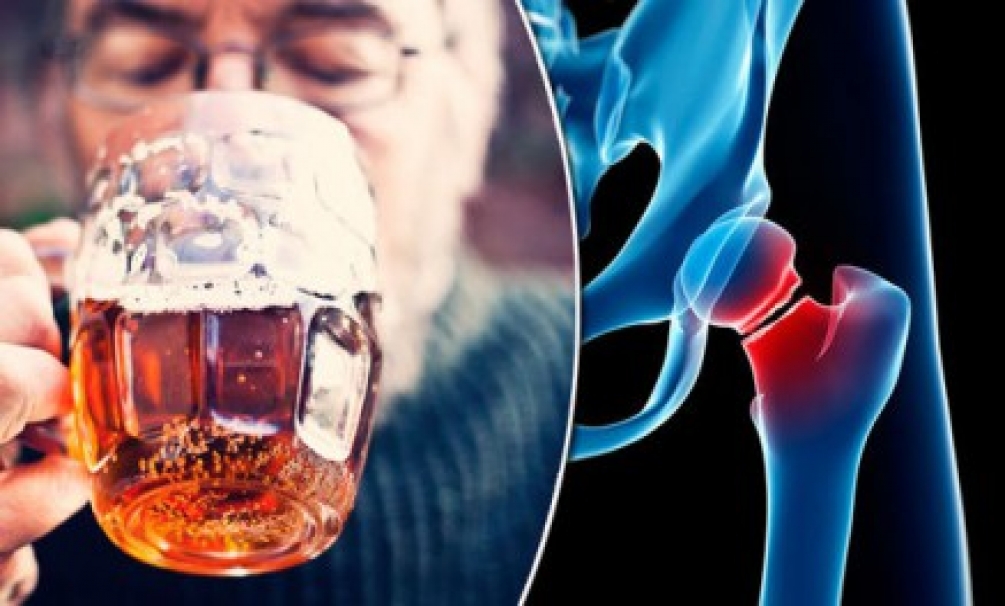
Atherosclerosis is a condition in which artery walls accumulate fat deposits, cholesterol and other substances in and on it. The deposition is called plaque and over time, it harde
MORE
Blueberries are rich in nutritional values and are tasty. Having a cupful of them on a daily basis have proved to improve metabolism markers linked to cardiovascular risk in an indivi
MORE

Meditation is well known for maintaining a healthy mind and for culturing a well maintained mind-body coordination. It has been into practice since ages, and initially attached to religions like Buddhism, Christianity, etc. Apart from the hypothetical reasoning, a scientific understanding of meditation is relevant. Types of meditation are varied, while some are for love and kindness, some initiate mindfulness in an individual. A research was conducted to find out whether there are any potential harms caused by them and the scientists investigated the following factors:
1. Resilience to stress
Managing stress is considered the No.1 benefit of meditation. Repetition of a mantra or chanting is said to settle and calm one’s mind. Researchers looked into the reason behind this. Studies showed that along with other effects, meditation is associated with lower levels of the molecule " nuclear factor kappa B," which influences the regulation of gene expression. This molecule activates a series of molecules called "cytokines" and cytokines are responsible for adverse effects like abnormal inflammation, cancer, and depression, etc. "Millions of people around the world already enjoy the health benefits of mind-body interventions like yoga or meditation, but what they perhaps don't realize is that these benefits begin at a molecular level and can change the way our genetic code goes about its business," says the study's lead researcher, Ivana Buric, from Coventry University in the United Kingdom.
2. Improved self-control
Overall control over one’s mind is another positive impact of meditation. Stusdies were conducted on this topic. " The goal during mindful moments is not to empty the mind but to become an observer of the mind's activity while being kind to oneself," says the study's lead author, Dr. Richa Sood. Results showed that it also helped as a powerful weapon against addiction, to help lose weight through “mindful eating” etc.
3. A healthier brain
According to studies, Yoga coupled with meditation proves to be effective in maintain a healthy brain. Researchers observed that experienced meditators exhibited less issues than others of their same age who didn’t practice meditation. " Regular practice of yoga and meditation could be a simple, safe, and low-cost solution to improving your brain fitness.";, says Dr. Helen Lavretsky.


Atherosclerosis is a condition in which artery walls accumulate fat deposits, cholesterol and other substances in and on it. The deposition is called plaque and over time, it hardens leading to narrowing of arteries. It gradually causes cardiovascular issues like such as coronary heart disease or peripheral artery disease, as well as a heart attack or stroke when plaque restricts the optimal flow of oxygen, blood and nutrients to body parts. Detected causes leading to atherosclerosis are high blood pressure, high cholesterol, and cigarette smoking. Now, scientists also doubt the active role of air pollution in causing atherosclerosis. Studies were conducted and results showed long term exposure to ozone has caused considerable increase in rate of carotid wall thickness progression and risk of new plaque formation in many cases. This in turn can injure carotid arteries — the two large vessels responsible for supplying blood to the head and neck. "This may indicate that the association between long-term exposure to ozone and cardiovascular mortality that has been observed in some studies is due to arterial injury and acceleration of atherosclerosis," says Meng Wang, Ph.D., assistant professor of epidemiology and environmental health. However, scientists still have a long way to go as they just know that long-term exposure to ozone causes atherosclerosis, but are unaware of its biological processes.


Blueberries are rich in nutritional values and are tasty. Having a cupful of them on a daily basis have proved to improve metabolism markers linked to cardiovascular risk in an individual. Metabolic syndrome is a package of conditions like high blood pressure, excess body fat around the waist, high blood sugar levels, abnormal cholesterol and triglyceride levels. When combined, they may lead to cardiovascular issues as well as type 2 Diabetes. Studies were conducted on blueberries to see whether they have positive effects on metabolic profile of people with metabolic syndrome. Blueberries are rich in anthocyanins – a water soluble pigment found in plant parts like root stem etc. in red, black, blue, or purple colors. Blueberries are rich in anthocyanins, which might be the reason it had positive impacts on reducing risks of 2 diabetes and cardiovascular disease in earlier studies. "We wanted to find out whether eating blueberries could help people who have already been identified as being at risk of developing these sort of conditions.", lead researcher Prof. Aedin Cassidy. During the study, participants were divided into three groups where one group had 1 whole cup of freeze-dried powdered blueberries per day, second group had half a cup and third one acted as a control group. Results showed that participants who consumed one whole cup per day made a remarkable result by reducing cardiovascular disease risk by 12-15%. On the other hand, even the group who consumed half a cup every day did not exhibit any kind of benefits.
The obese state among American population is found to be on a rise with current statistics showing 37% of the U.S citizens as obese. Also, more than 32% of U.S adults are said to be overweight. In this state, scientists have come up with a new strategy for preventing holiday weight gain by adopting a psychological mechanism. An average number of people are under the threat of obesity in future even though their weight gain per year is a considerable small amount of 0.4–1.5 Kg. A new research was led by Jamie Cooper, Ph.D., who is an associate professor in the Department of Foods and Nutrition at the University of Georgia in Athens. During the study, participants ageing from 18-65 years were analysed. They were asked to make three visits – one before holidays, one after holidays and one 14 weeks after a period of intervention. During the intervention, participants were asked to maintain their weight somehow and did not advice on any methods in doing so. At the end, those who constantly checked their weight and got a graphical representation of their weight changes were led to weight loss or maintained the same weight, while on the other hand, those who failed to check weight daily gained weight. Scientists said that those who checked their weight dieted harder or exercised harder every time they noticed a slight weight gain, thus keeping weight gain at bay. "People are really sensitive to discrepancies or differences between their current selves and their standard or goal. When they see that discrepancy, it tends to lead to behavioral change. Daily self-weighing ends up doing that for people in a really clear way.", explains study co-author Michelle Van Dellen.


Alzheimer’s is a progressive disease which affects memory as well as other relevant memory functions. While most people suffer from Alzheimer’s in their late years, rare conditions suffer from early-onset Alzheimer’s which occurs before the age of 65. The reasons responsible for early-onset Alzheimer’s are not yet fully comprehended by the scientists, yet they have significant doubts on the role of “ bad cholesterol” in it. The only determining factor is genetic, namely the expression of a variant of the gene APOE, called APOE E4, which also has an association with higher levels of circulating low-density lipoprotein (LDL) cholesterol. Earlier researches have shown that LDL cholesterol has adverse effects on health as its rise in level could lead to accumulation in arteries thus obstructing blood flow, which in turn leads to cardiovascular issues, hence known as bad cholesterol. A new study has revealed the connection of high (LDL) cholesterol with early-onset Alzheimer’s. Lead author Dr. Thomas Wingo says that their next agenda is to establish whether there is a causal link between cholesterol levels in the blood and Alzheimer's disease risk and that the current analysis has been vague about this. “ One interpretation of our current data is that LDL cholesterol does play a causal role. If that is the case, we might need to revise targets for LDC cholesterol to help reduce Alzheimer's risk," says Dr. Thomas Wingo.


Osteoporosis is the condition in which the bone strength of an individual slowly deteriorates over time making them fragile and susceptible to fracture. A cell mechanism which causes a cell type in the immune system to change into osteoclasts has been found. The osteoclast is a cell which tends to dissolve or resorb bones. It gets initiated when factors including alcohol consumption and smoking are involved and thus raises the risk of osteoporosis. When under stress, the powerhouse of a cell “mitochondria” sends out signals that initiate this process. When this takes place in the mitochondria of macrophages (prolific immune cells that remove cell waste and foreign objects by swallowing and digesting them), the cells are converted into osteoclasts. " We show in this paper that when mitochondrial function is affected, it not only affects energy production but also triggers a type of stress signaling that induces the overproduction of osteoclasts," says senior study author Narayan G. Avadhani. Alongside, factors such as smoking, drinking, etc. increase the risk of osteoporosis. In the study, researchers found out a stress signaling pathway and that by triggering the pathway, it can lead macrophages to differentiate into osteoclasts that resorb bone.
 by Neha Nair
by Neha Nair
Detox drinks have always been included in detoxifying diets assuming it to help cleanse a person’s body and to help lose weight. Detoxification sure takes up a role in medical context, but it has little proven detoxifying benefits as commonly believed while including in a daily diet. In medical science, detoxification assists with any withdrawal symptoms of a person when the drugs he is addicted to are stopped. Hence, the use of the word detox is not always appropriate when not in medical context. Detox drinks may boost health, aid in weight loss, and support the body's natural detoxification processes, but this is different from medical detoxification. Studies say that commercially available detox diets are said to improve how toxins are removed from liver, but it has also been highlighted that these studies have flawed methodologies too. The claim on weight loss by following a detox diet is only because the diet is low in calories and also, the lost weight is said to be gained back after a certain period of time, thus making it a short-term solution to weight gain. Detox drinks are not bad, it is always good to include drinks including fruits and veggies to complete a balanced diet. It is just better to call it health drink or smoothie as the claimed detoxifying factors are negligible.
 by Mrinalini R I
by Mrinalini R I
Exercise has always been linked to the mental health of humans and many studies have been conducted to know more in detail about it. Physical activities have proven roles in fighting depression symptoms, anxiety etc. Now, scientists have stepped up for a new research in the field by introducing a gym in a psychiatric inpatient unit to study the effects it has on the inpatients. Psychiatric inpatients are complex in nature and suffer from a range of disorders. Also, such facilities are often crowded leaving the patients in a more stressful atmosphere. Prof. David Tomasi, a lecturer, psychotherapist, and inpatient psychiatry group therapist wishes to improve the facility’s operations and help patients receive targeted treatment while helping them recover and take leave as soon as possible. He designed an experiment that combined physical activity with information about healthful nutrition — building a holistic, drug-free intervention. As a part of the study, a gym was set up in a facility. It was provided with ambient space and lighting, making the setting provide patients with a different ambience from the rest of the facility. 100 participants suffering from different mental health issues were made to exercise regularly for 60 minutes daily and another 60 minutes of education sessions were provided to make them aware of diets, nutritional factors etc. Outcome of the study was overwhelming as 91.5% of participants reported that they felt better about their bodies after work out and also that their mood has improved with evident reduction in anxiety. “The general attitude of medicine is that you treat the primary problem first, and exercise was never considered to be a life or death treatment option. Now that we know it's so effective, it can become as fundamental as pharmacological intervention.", says Prof. David Tomasi.



1 Cup masoor dal (cooked)
30-40 Gram black beans (cooked)
8 broccoli florets
Few drops Tabasco sauce
1/2 a sweet lime/mosambi cut into segments
100 Gram papaya (diced)
2-3 potatoes (cooked)
1 Cup methi sprouts
For the Chaat Dressing:
1/2 tsp chaat masala
1/2 tsp amchur (raw mango) powder
1 Tbsp olive oil
1 Tbsp balsamic vinegar
20 Ml honey
30-35 Gram onions, chopped

1.Cut and trim broccoli florets.
2.Season with salt, pepper and olive oil and put on a grill until charred.
3.Alternately you could even roast in the oven for 15 minutes or so.
4.Whisk all the dressing ingredients together to mix well.
5.Add all the ingredients for the chaat in a bowl.
6.Pour in the dressing and toss together.
7.Add some methi sprouts and the charred broccoli and serve.
Key Ingredients: masoor dal (cooked), black beans (cooked), broccoli florets, Tabasco sauce, a sweet lime/mosambi cut into segments, papaya (diced), potatoes (cooked), methi sprouts, chaat masala, amchur (raw mango) powder, olive oil, balsamic vinegar, honey